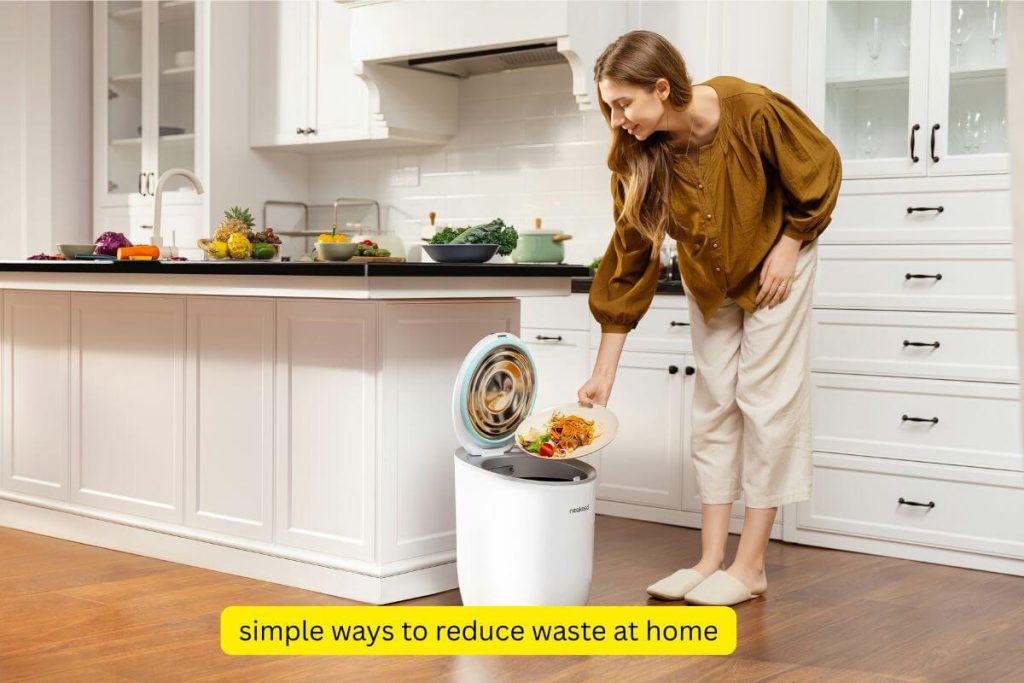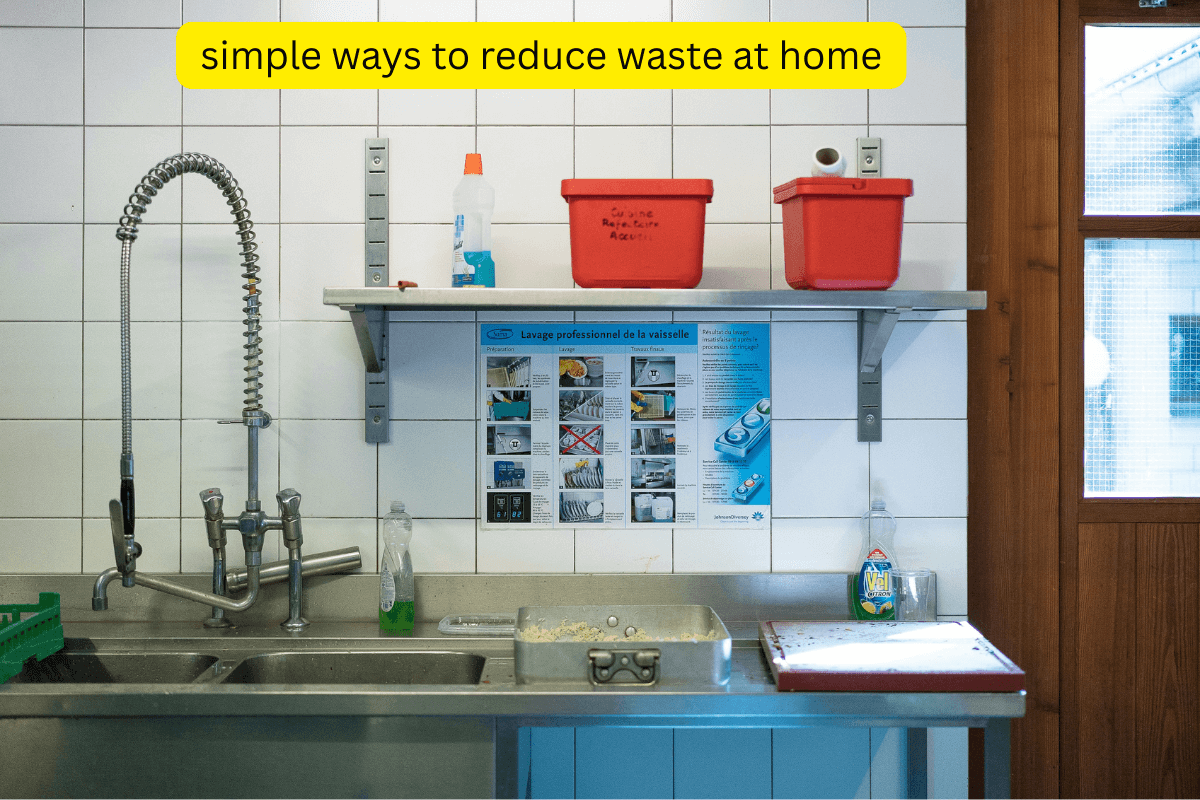
Simple ways to reduce waste at home can make a big difference for the planet and your wallet, even if you’re just starting out. If the idea of going green feels daunting, don’t worry! You don’t need to overhaul your life to cut down on trash. With a few practical, beginner-friendly changes, you can reduce waste, save money, and create a more sustainable home. In this guide, I’ll share 10 simple ways to reduce waste at home, plus answer common questions to help you kickstart your eco-friendly journey with confidence.
Why Reducing Waste at Home Matters
Every year, households produce mountains of waste—think food scraps, plastic packaging, and paper—that clog landfills and harm the environment. According to the EPA’s guide on reducing waste, cutting back on household waste can lower greenhouse gas emissions and conserve natural resources. By adopting simple ways to reduce waste at home, you’re not only helping the planet but also creating a cleaner, more intentional living space. Plus, it’s a great way to inspire friends and family to join the movement!
Ready to get started? Here are 10 practical tips to reduce waste at home, perfect for beginners.
10 Simple Ways to Reduce Waste at Home
1. Compost Food Scraps to Cut Kitchen Waste
Food waste is a major culprit in household trash. Instead of throwing out veggie peels, coffee grounds, or eggshells, try composting them. You don’t need a big yard—a small countertop compost bin works great for apartments. Composting transforms organic waste into nutrient-rich soil for plants, reducing landfill contributions. Check out Zero Waste Week’s composting guide for beginner-friendly tips to get started.
Tip: Look for local compost drop-off programs if you lack outdoor space.
2. Swap Single-Use Plastics for Reusables
Single-use plastics like straws, water bottles, and bags add up fast. Replace them with reusable alternatives, such as stainless steel straws, glass bottles, or cloth totes. These swaps are affordable, durable, and drastically cut plastic waste. The Nature Conservancy’s waste reduction tips highlight how reusable bags can make a big impact.
Pro Tip: Keep a reusable tote and bottle in your car for spontaneous shopping trips.
3. Plan Meals to Prevent Food Waste
Overbuying groceries often leads to spoiled food in the trash. Plan your meals and shop with a list to buy only what you need. Apps like Too Good To Go can also help you rescue surplus food at a discount, preventing waste. The EPA’s food waste prevention tips suggest storing leftovers properly to extend their life.
Hack: Freeze fruits and veggies nearing their expiration for smoothies or soups.
4. Switch to Cloth Instead of Paper Towels
Paper towels are convenient but create unnecessary waste. Switch to reusable cloth rags or microfiber towels for cleaning. They’re washable, effective, and save money over time. This small change aligns with One Tree Planted’s zero-waste ideas for sustainable living.
Fun Fact: A set of cloth rags can replace hundreds of paper towel rolls!
5. Repurpose Items Before Recycling
Before tossing something in the recycling bin, consider if it can be reused. Glass jars can store pantry items, old t-shirts can become cleaning rags, and cardboard boxes can organize clutter. The Freecycle Network lets you gift items you no longer need, keeping them out of landfills.
Idea: Search Pinterest for DIY upcycling projects to spark creativity!
6. Buy in Bulk with Reusable Containers
Buying in bulk reduces packaging waste, especially if you bring reusable containers to stores. Many groceries now offer bulk bins for grains, nuts, and even soaps. The World Refill Day’s Refill App helps you find refill stations near you, making this step easier.
Note: Check if your store has a “tare” system to weigh containers before filling.
7. Opt Out of Junk Mail
Paper waste from unsolicited catalogs and flyers piles up quickly. Opt out of junk mail through services like DMAchoice or Catalog Choice, or switch to digital bills. The EPA’s reducing waste guide emphasizes how reducing paper use saves resources.
Quick Win: Add a “No Junk Mail” sticker to your mailbox to deter unwanted deliveries.
8. Repair Instead of Replace
When clothes, furniture, or electronics break, try repairing them before buying new. YouTube tutorials or local repair shops can help fix a torn shirt or wobbly chair. This approach keeps items out of landfills and saves money. Explore One Tree Planted’s zero-waste ideas for more repair inspiration.
Bonus: Learning repair skills is empowering and budget-friendly!
9. Choose Products with Eco-Friendly Packaging
When shopping, pick products with minimal or sustainable packaging, like loose produce or bar soap instead of plastic-bottled liquid soap. The Cradle to Cradle framework encourages choosing products designed for sustainability, reducing waste from the source.
Try This: Support brands offering refillable or compostable packaging.
10. Learn and Share Sustainable Habits
One of the easiest ways to reduce waste at home is to stay informed and spread the word. Follow eco-friendly blogs, join local sustainability groups, or share tips with friends. The Nature Conservancy’s waste reduction tips offer great ideas to inspire others.
Challenge: Share one tip from this list with someone this week!
FAQs About Reducing Waste at Home
1. What’s the easiest way to start reducing waste at home?
Start with one small swap, like using a reusable water bottle instead of plastic ones. Build from there with habits like meal planning or composting.
2. How can I reduce waste in a small apartment?
Use a countertop compost bin, shop in bulk with reusable containers, and opt out of junk mail. Digital decluttering also saves space.
3. Does composting smell or take a lot of effort?
Not if done right! A sealed compost bin with a charcoal filter prevents odors. Avoid composting meat or dairy, and empty it regularly. See Zero Waste Week’s guide for tips.
4. How do I know what’s recyclable?
Recycling rules vary by location. Check Earth911’s recycling guide to find local guidelines. Generally, clean paper, cardboard, glass, and some plastics are recyclable.
5. Can reducing waste save money?
Yes! Reusable items, bulk buying, and repairing instead of replacing cut costs. Meal planning also prevents wasted groceries.
Final Thoughts: Small Steps, Big Impact
Embracing simple ways to reduce waste at home doesn’t have to be overwhelming. Start with one or two tips—like composting or using cloth rags—and watch how these small changes add up. Not only will you help the environment, but you’ll also enjoy a tidier home and extra savings. The key is to take it one step at a time and have fun with it!
Which tip are you excited to try first? Drop a comment below or share your own waste-reducing ideas—I’d love to hear them! Let’s make sustainable living simple, approachable, and impactful together.
